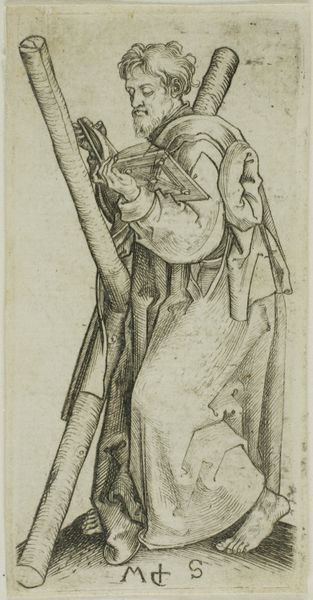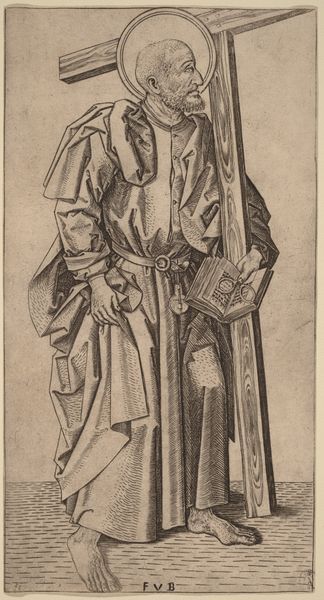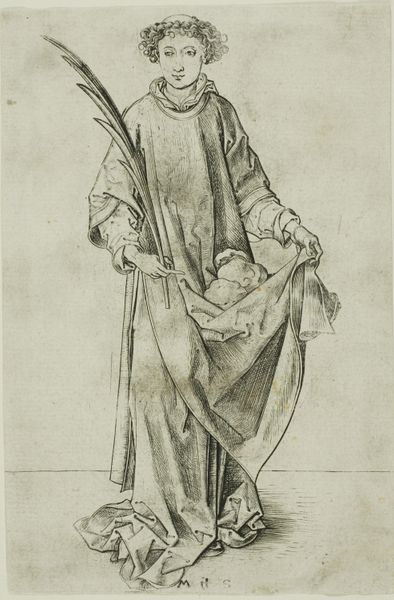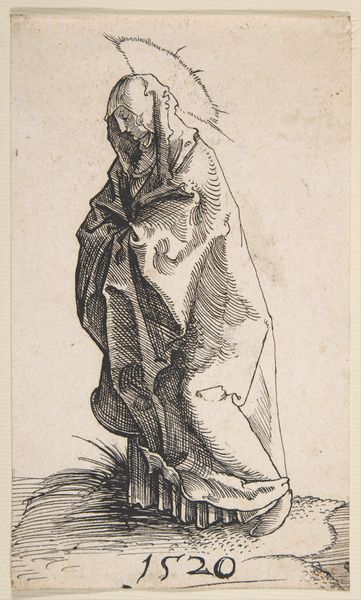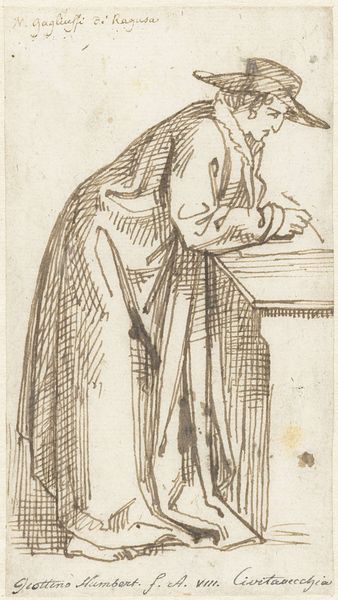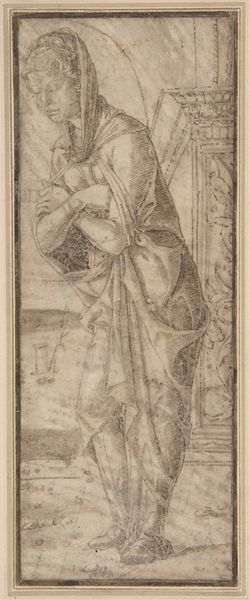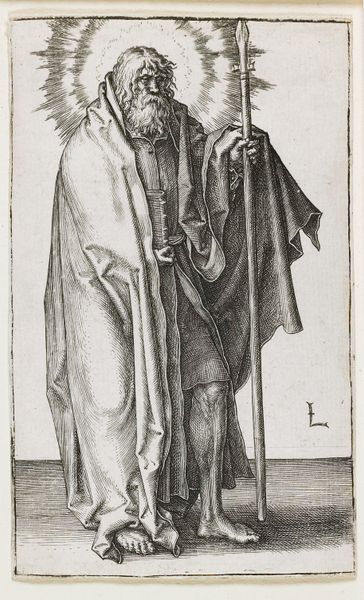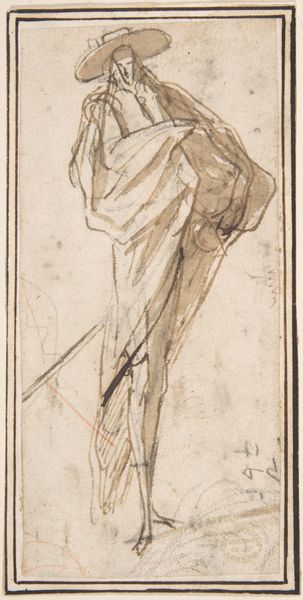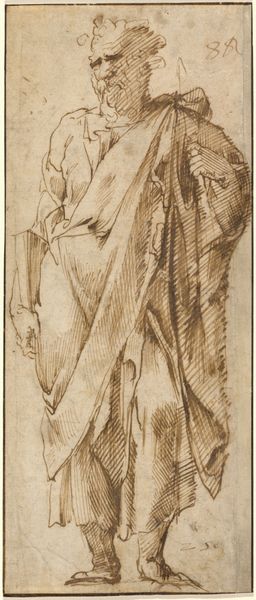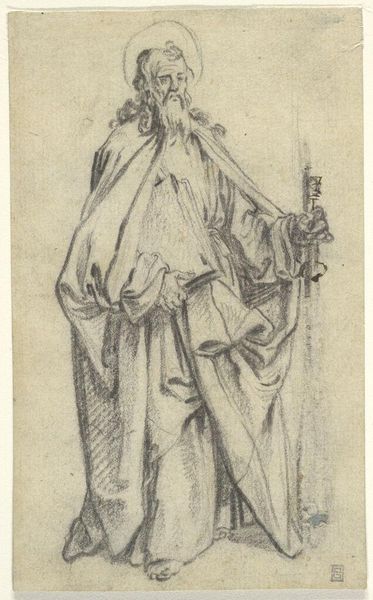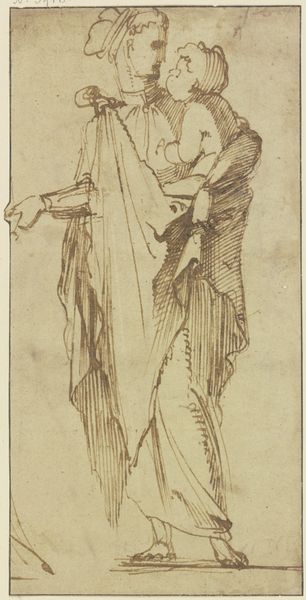
drawing, print
#
portrait
#
drawing
#
medieval
# print
#
figuration
#
pencil drawing
#
portrait drawing
#
northern-renaissance
Dimensions: 8 1/8 x 3 5/8 in. (20.6 x 9.2 cm)
Copyright: Public Domain
Martin Schongauer etched this representation of St. Matthew in the late fifteenth century. Here, the evangelist holds a book, a potent symbol of knowledge and divine inspiration. His pointing gesture is reminiscent of classical orators, a convention that links him to the apostles, who were charged with spreading the word. Consider this gesture alongside depictions of philosophers or prophets from antiquity. The act of pointing transcends its literal meaning, becoming a symbol of authority and guidance. We see echoes of this in Renaissance art, where figures like Plato or Aristotle often make similar gestures to convey profound philosophical insights. Such symbols are not static; they evolve. While the pointing finger might signify direction, it also carries the weight of centuries of cultural memory. It speaks to our deep-seated need for guidance, for figures who can illuminate the path forward, engaging viewers on a subconscious level. The gesture's emotional power stems from its capacity to evoke feelings of reverence, trust, and intellectual curiosity. The recurrence and transformation of this motif through history underscores how cultural symbols have resurfaced, evolved, and taken on new meanings in different contexts.
Comments
No comments
Be the first to comment and join the conversation on the ultimate creative platform.
